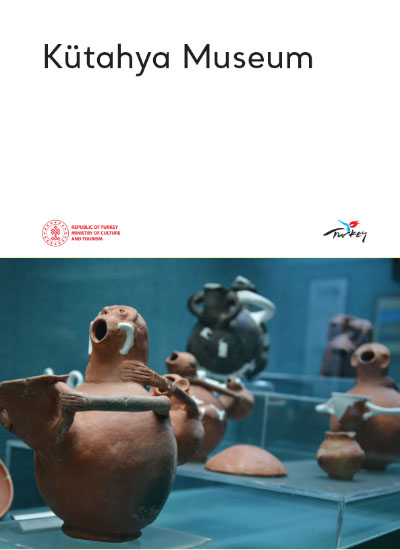The Kütahya Museum was established in 1965 in the building known as Umur bin Savcı Madrasa, commissioned by Umur bin Savcı, a Germiyan principal, in 1314. The structure, built with ashlar, exhibits the architectural characteristics of the Principalities Period, while its portal shows features of Seljuk Art. The museum exhibits artifacts from the Paleolithic, Chalcolithic, Early Bronze Ages, Phrygian, Achaemenid, Hellenistic, Roman, East Roman, Seljuk, and Ottoman Periods. The museum's oldest cultural assets include miscellaneous fossils from the Late Miocene Age, painted pottery from the Late Chalcolithic Age, and pottery samples from the Early Bronze II and III ages found in the Kütahya environs. Additionally, there are various finds from the Phrygian and Achaemenid periods dating back to the Iron Age. Notable artifacts from the Roman Empire Period include child toys, sculptures of Mother Goddess, Cybele, Demeter, Satyr, and Hekate. The artifacts obtained from salvage excavations of Museum Directorates between 1989-1995 and Dumlupınar University, Department of Archaeology between 2006-2014 are exhibited in a dedicated showcase. The exhibited items include pottery from the Early Bronze Age III, such as amphoras, bowls, plates, jugs, combined pots, miniature pots, lids, pottery molds, rhytons, libation pots, and askoses, categorized by their form types. The Museum Directorate has put on display the finds obtained from a salvage excavation at Ağızören Necropolis in a small showcase. The necropolis at Ağızören Höyüktepe has provided valuable information on the grave types and inhumation traditions of the Middle Bronze Age in Kütahya province. The museum showcases terracotta pottery, glass artifacts, and bronze surgery tools from the Hellenistic and Roman periods. One of the museum's significant architectural plastic artifacts is the Amazon sarcophagus discovered in 1960 at the Aizonai Archaeological Site. The sarcophagus, dating back to 160 AC, features high reliefs depicting war scenes related to the Amazons and is a rare artifact of its time. Marble ostotheks from the Roman Empire period, used to store the ashes of the dead, are among the museum's most attractive finds. A dedicated section of the museum is reserved for artifacts from the Seyitömer Tumulus, which has a pottery repertoire consisting of twelve high-quality forms that establish the region as the 'Seyitömer Culture Region' in Western Anatolia. Seyitömer is a unique settlement, particularly among Early Bronze Age III settlements, due to the large areas where both architecture and in-situ finds have been discovered.
KÜTAHYA ARCHAEOLOGICAL MUSEUM


